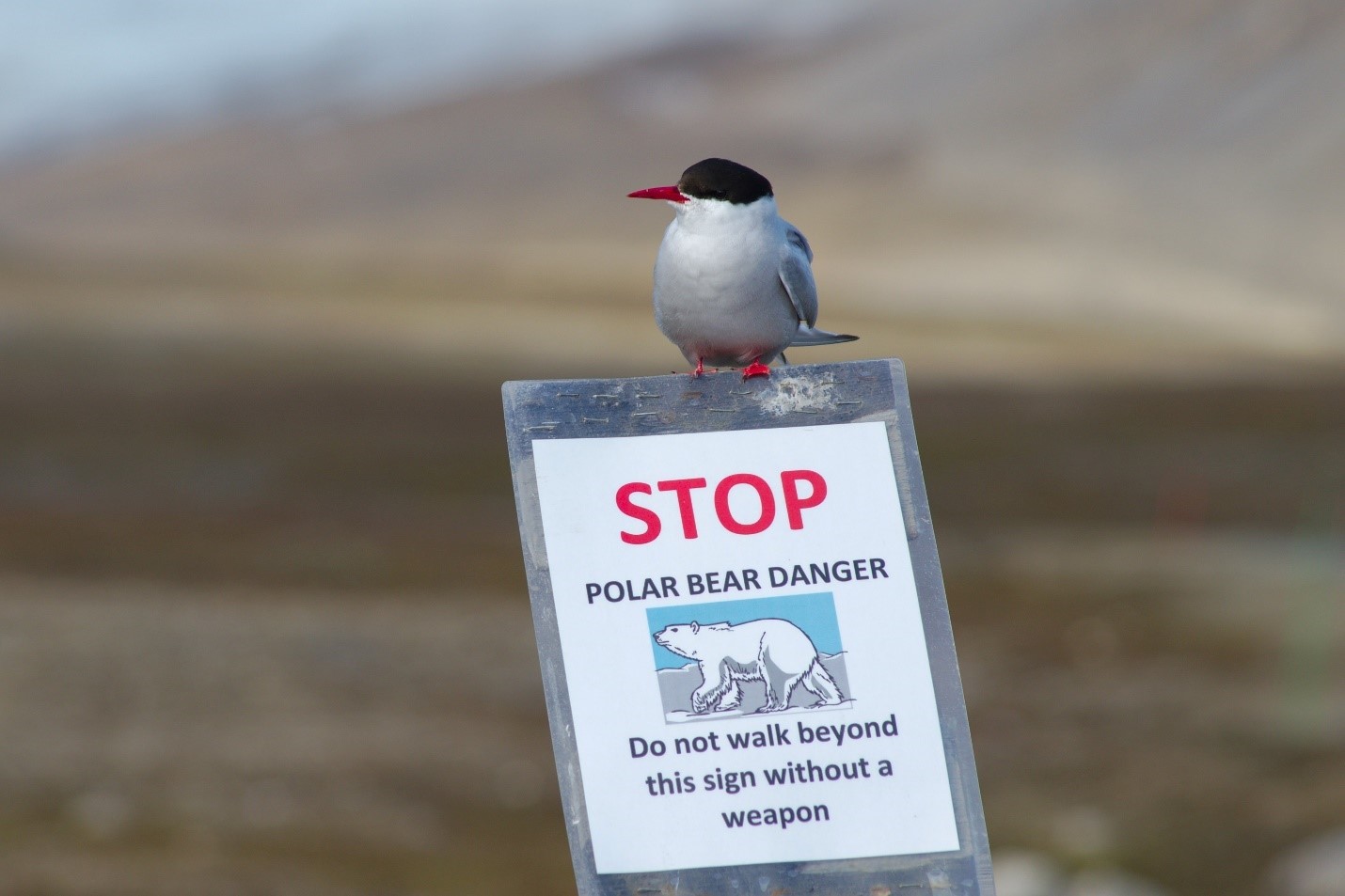
When you picture climate change, you might recall images of emaciated polar bears, or more likely, a polar bear clutching a small piece of ice amid the ocean. Polar bears have become the posterchild of climate change for many people, and this isn’t surprising. Polar bears spend the majority of their lives on sea ice, hunting energy-rich marine prey. As temperatures heat up, the fate of polar bears is uncertain.
In a recent publication in PLOS ONE, Karyn D. Rode (USGS) and colleagues used satellite radio collars to track polar bear movement as sea ice becomes scarce. Specifically, they want to know if polar bears in the Chukchi Sea region (off the northern Alaskan coast) are using land more or less than they have in the past.
Every summer, warmer temperatures cause polar ice to retreat north away from the continental shelf and into the Arctic basin. But recently, the ice is retreating earlier, meaning there is less sea ice near land, for a longer period of time. In the northern region of the Chukchi Sea, research from Rode et al. found that the ice is retreating away from land 20-40 days sooner (measured from 2008-2013) compared to only a few decades earlier (1986-1995). As the ice retreats, polar bears face a dilemma – follow the ice, or remain on land and miss out on hunting opportunities at sea.
While some polar bears, particularly pregnant females, use land for denning, it doesn’t provide much in the way of food. So remaining on land means longer fasting periods, or exploitation of non-traditional food sources such as whale carcasses or walruses. But remaining with the sea ice during the summer months may also be a gamble. Remaining on the ice provides more time to hunt while the ice remains over the continental shelf, but polar bears are then stuck on the ice as it recedes to deeper waters in the Artic basin where prey is limited.
As sea ice becomes more scarce, will polar bears choose land, or sea?
To answer this question, Rode and colleagues (2015) used tracking information from polar bears living in the Chukchi Sea, collected over two time periods: 1986-1995 and 2008-2013; comparing time on land between the two groups.
In the “historic” polar bear group (1986-1995), 20% of polar bears remained on land for more than seven days during the summer months (Aug-Oct). In the “modern” group (2008-2013), the percentage of polar bears spending significant time on land increased to 38.9%. Even more striking, of those bears going to land, modern bears spent on average 30 days longer on land compared to the historic group. Furthermore, modern bears are coming to land around 20 days earlier than the historic group. This increased use of land by polar bears seems to be highly correlated with a loss in sea ice.
But does increased land occupancy and use by polar bears have consequences? This behavioral change could be a positive adaptation to deal with climate change. However, several other studies have found loss of ice to be associated with polar bear population decline. As ice becomes more scarce, polar bears are forced to fast for longer stretches of time, or find alternative food sources. This can have negative health consequences for bears, and also impact the surrounding community. When polar bears rely on finding food on land, they exploit food resources they haven’t previously utilized. Researchers worry that this shift in diet may cause unexpected drops in newly utilized prey populations such as walruses or lemmings. Polar bears will also have to compete for food with their close relative – grizzly bears. As polar bears begin spending more time on land, food sources may become increasingly scarce for both bears.
As polar bears spend more time on land, there is increasing concern over the interaction between polar bears and humans. Polar bears are spending more time in areas used for military and tourism. As climate change progresses, human-polar bear interactions are likely to increase, raising concerns over human safety and the future of polar bear conservation.

 Kelsey Graham is a PhD Candidate at Tufts University, Department of Biology. Her research interests lie at the intersection of invasion ecology and animal behavior, with a focus on interspecific interactions between native and non-native species. Kelsey uses an interdisciplinary approach to answer questions from multiple theoretical perspectives, providing a comprehensive assessment of an invasive species within their invaded ecosystems. Her current focus is on an invasive bee, the European wool-carder bee (Anthidium manicatum), and its impact on native pollinators and plants. (Follow Kelsey on Twitter@woolcarderbee)
Kelsey Graham is a PhD Candidate at Tufts University, Department of Biology. Her research interests lie at the intersection of invasion ecology and animal behavior, with a focus on interspecific interactions between native and non-native species. Kelsey uses an interdisciplinary approach to answer questions from multiple theoretical perspectives, providing a comprehensive assessment of an invasive species within their invaded ecosystems. Her current focus is on an invasive bee, the European wool-carder bee (Anthidium manicatum), and its impact on native pollinators and plants. (Follow Kelsey on Twitter@woolcarderbee)
Source: With disappearing sea ice, polar bears spend more time on land















